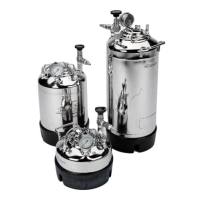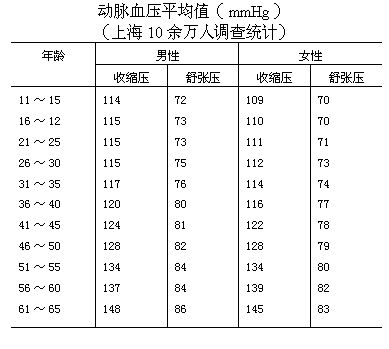Arterial Pressure Monitoring in Mice
互联网
- Abstract
- Table of Contents
- Materials
- Figures
- Literature Cited
Abstract
The use of mice for the evaluation and study of cardiovascular pathophysiology is growing rapidly, primarily due to the relative ease of developing genetically engineered mouse models. Arterial pressure monitoring is central to the evaluation of the phenotypic changes associated with cardiovascular pathology and interventions in these transgenic and knockout models. There are four major techniques for measuring arterial pressure in the mouse: tail?cuff system, implanted fluid?filled catheters, Millar catheters, and implanted telemetry systems. Here we provide protocols for their use and discuss the advantages and limitations of each of these techniques. Curr. Protoc. Mouse Biol. 1:105?122. © 2011 by John Wiley & Sons, Inc.
Keywords: arterial pressure monitoring; mice; methods
Table of Contents
- Introduction
- Basic Protocol 1: Tail‐Cuff System
- Basic Protocol 2: Fluid‐Filled Catheter System
- Basic Protocol 3: Millar Solid‐State Micro‐Pressure Transducer Tipped Catheter
- Basic Protocol 4: Implanted Telemetry System
- Commentary
- Literature Cited
- Figures
- Tables
Materials
Basic Protocol 1: Tail‐Cuff System
Materials
Basic Protocol 2: Fluid‐Filled Catheter System
Materials
Basic Protocol 3: Millar Solid‐State Micro‐Pressure Transducer Tipped Catheter
Materials
Basic Protocol 4: Implanted Telemetry System
Materials
|
Figures
-
Figure 1. A comparison of arterial pressure obtained by tail cuff and intra‐arterial catheter (IA) using the same male C57BL/6J mouse. A good correlation between systolic, R 2 =0.9048 (A ), and mean arterial pressure, R 2 =0.9881 (B ), is observed with the two methods. View Image -
Figure 2. Illustration of the tail‐cuff system (A ). To replace the tail‐cuff balloon, the tail‐cuff material is threaded through the tail‐cuff device (B ), the ends are then everted over the ends (C ), and the balloon caps are then placed on to each of the two ends (D,E ). The mice are restrained individually during the recording process while the tail‐cuff system is connected to a computer for data acquisition (F ). View Image -
Figure 3. Schematic diagram of the tether system. After the arterial line has been placed in the mouse, the line is inserted into the catheter harness (1), threaded up the spring casing (2) for the catheter, and then attached to the swivel device (3) on the swivel arm (4). The catheter tubing (5) exits from the spring casing and is attached to the pressure transducer (6) set at the level of the heart. View Image -
Figure 4. Arterial pressure recording with an implanted fluid‐filled catheter showing an example of blood pressure change in response to vasoactive compounds in a conscious C57BL/6J mouse. An increase in both (A ), the aortic pressure (AOP) and (B ), the mean arterial pressure (MAP), and a decrease in (C ), the heart rate (HR) are noted with the administration of phenylephrine (PE). (D ) A decrease in AOP and (E ) MAP with (F ) an increased HR are noted with the administration of sodium nitroprusside (SNP). View Image -
Figure 5. Illustration of the suture placements for the three suture technique used during carotid artery catheter insertion. The sutures are placed around the right carotid artery. The numbers indicate the sequence of suture placement. View Image -
Figure 6. An example of telemetry blood pressure recording over a 24‐hr time period. The circadian variation in arterial pressure and heart rate are clearly observed in this recording. (A ) Arterial systolic pressure (SBP) and (B ) arterial diastolic pressure (DBP) variations are seen in both the wild‐type (WT, C57BL/6) and caveolin‐1 knockout (KO) mice. The shaded and nonshaded areas on the x axis represent the dark and light cycles, respectively (Desjardin et al., ). Figure reproduced and modified with permission. View Image -
Figure 7. Illustration of the telemetry unit with the anchoring sutures in place. In general, two to three anchoring sutures are used to fix the telemetry unit to the chest wall of the mice. View Image -
Figure 8. Illustration of a telemetric recording of mouse arterial pressure. The mice are housed individually during the recording process, with the recording receiver placed below each cage and connected to a computer for data acquisition. View Image
Videos
Literature Cited
| Literature Cited | |
| Carlson, S.H. and Wyss, J.M. 2000. Long‐term telemetric recording of arterial pressure and heart rate in mice fed basal and high NaCl diets. Hypertension 35:E1‐E5. | |
| Desjardins, F., Lobysheva, I., Pelat, M., Gallez, B., Feron, O., Dessy, C., and Balligand, J.L. 2008. Control of blood pressure variability in caveolin‐1‐deficient mice: Role of nitric oxide identified in vivo through spectral analysis. Cardiovasc. Res. 79:527‐536. | |
| Doevendans, P.A., Daemen, M.J., de Muinck, E.D., and Smits, J.F. 1998. Cardiovascular phenotyping in mice. Cardiovasc. Res. 39:34‐49. | |
| Feng, M., Whitesall, S., Zhang, Y., Beibel, M., D'Alecy, L., and DiPetrillo, K. 2008. Validation of volume‐pressure recording tail‐cuff blood pressure measurements. Am. J. Hypertens. 21:1288‐1291. | |
| Feng, M., Deerhake, M.E., Keating, R., Thaisz, J., Xu, L., Tsaih, S.W., Smith, R., Ishige, T., Sugiyama, F., Churchill, G.A., and DiPetrillo, K. 2009. Genetic analysis of blood pressure in 8 mouse intercross populations. Hypertension 54:802‐809. | |
| Gross, V. and Luft, F.C. 2003. Exercising restraint in measuring blood pressure in conscious mice. Hypertension 41:879‐881. | |
| Hart, C.Y., Burnett, J.C. Jr., and Redfield, M.M. 2001. Effects of avertin versus xylazine‐ketamine anesthesia on cardiac function in normal mice. Am. J. Physiol. Heart Circ. Physiol. 281:H1938‐ H1945. | |
| Janssen, B.J., De Celle, T., Debets, J.J., Brouns, A.E., Callahan, M.F., and Smith, T.L. 2004. Effects of anesthetics on systemic hemodynamics in mice. Am. J. Physiol Heart Circ Physiol 287:H1618‐H1624. | |
| Kiatchoosakun, S., Kirkpatrick, D., and Hoit, B.D. 2001. Effects of tribromoethanol anesthesia on echocardiographic assessment of left ventricular function in mice. Comp. Med. 51:26‐29. | |
| Kramer, K., Voss, H.P., Grimbergen, J.A., Mills, P.A., Huetteman, D., Zwiers, L., and Brockway, B. 2000. Telemetric monitoring of blood pressure in freely moving mice: A preliminary study. Lab. Anim. 34:272‐280. | |
| Krege, J.H., Hodgin, J.B., Hagaman, J.R., and Smithies, O. 1995. A noninvasive computerized tail‐cuff system for measuring blood pressure in mice. Hypertension 25:1111‐1115. | |
| Kurtz, T.W., Griffin, K.A., Bidani, A.K., Davisson, R.L., and Hall, J.E. 2005. Recommendations for blood pressure measurement in humans and experimental animals. Part 2: Blood pressure measurements in experimental animals. Hypertension 45:299‐310. | |
| Lin, M., Harden, S.W., Li, L., Wurster, R.D., and Chen, Z. 2010. Impairment of baroreflex control of heart rate in conscious transgenic mice of type 1 diabetes (OVE26). Auton. Neurosci. 152:67‐74. | |
| Lorenz, J.N. 2002. A practical guide to evaluating cardiovascular, renal, and pulmonary function in mice. Am. J. Physiol. Regul. Integr. Comp. Physiol. 282:R1565‐R1582. | |
| Lorenz, J.N. and Robbins, J. 1997. Measurement of intraventricular pressure and cardiac performance in the intact closed‐chest anesthetized mouse. Am. J. Physiol. 272:H1137‐H1146. | |
| Ma, X., Abboud, F.M., and Chapleau, M.W. 2002. Analysis of afferent, central, and efferent components of the baroreceptor reflex in mice. Am. J. Physiol. Regul. Integr. Comp. Physiol. 283:R1033‐R1040. | |
| Mattson, D.L. 1998. Long‐term measurement of arterial blood pressure in conscious mice. Am. J. Physiol. 274:R564‐R570. | |
| Odashima, M., Usui, S., Takagi, H., Hong, C., Liu, J., Yokota, M., and Sadoshima, J. 2007. Inhibition of endogenous Mst1 prevents apoptosis and cardiac dysfunction without affecting cardiac hypertrophy after myocardial infarction. Circ. Res. 100:1344‐1352. | |
| Pena, J.R. and Wolska, B.M. 2005. Differential effects of isoflurane and ketamine/inactin anesthesia on cAMP and cardiac function in FVB/N mice during basal state and beta‐adrenergic stimulation. Basic Res. Cardiol. 100:147‐153. | |
| Roth, D.M., Swaney, J.S., Dalton, N.D., Gilpin, E.A., and Ross, J. Jr. 2002. Impact of anesthesia on cardiac function during echocardiography in mice. Am. J. Physiol. Heart Circ. Physiol. 282:H2134‐H2140. | |
| Szczesny, G., Veihelmann, A., Massberg, S., Nolte, D., and Messmer, K. 2004. Long‐term anaesthesia using inhalatory isoflurane in different strains of mice‐the haemodynamic effects. Lab. Anim. 38:64‐69. | |
| Uechi, M., Asai, K., Osaka, M., Smith, A., Sato, N., Wagner, T.E., Ishikawa, Y., Hayakawa, H., Vatner, D.E., Shannon, R.P., Homcy, C.J., and Vatner, S.F. 1998. Depressed heart rate variability and arterial baroreflex in conscious transgenic mice with overexpression of cardiac Gsα. Circ. Res. 82:416‐423. | |
| van Nimwegen, C., van Eijnsbergen, B., Boter, J., and Mullink, J.W. 1973. A simple device for indirect measurement of blood pressure in mice. Lab. Anim. 7:73‐84. | |
| Vatner, D.E., Yan, G.P., Geng, Y.J., Asai, K., Yun, J.S., Wagner, T.E., Ishikawa, Y., Bishop, S.P., Homcy, C.J., and Vatner, S.F. 2000. Determinants of the cardiomyopathic phenotype in chimeric mice overexpressing cardiac Gsα. Circ. Res. 86:802‐806. | |
| Vatner, S.F. and Braunwald, E. 1975. Cardiovascular control mechanisms in the conscious state. N. Engl. J. Med. 293:970‐976. | |
| Vatner, SF., Takagi, G., Asai, K., and Shannon, R.P. 2002. Cardiovascular physiology in mice: Conscious measurements and effects of anesthesia. In Cardiovascular Physiology in the Genetically Engineered Mouse (B.D. Hoit, ed.) pp. 257‐275. Kluwer Academic Publishers, New York. | |
| Whitesall, S.E., Hoff, J.B., Vollmer, A.P., and D'Alecy, L.G. 2004. Comparison of simultaneous measurement of mouse systolic arterial blood pressure by radiotelemetry and tail‐cuff methods. Am. J. Physiol. Heart Circ. Physiol. 286:H2408‐H2415. |








